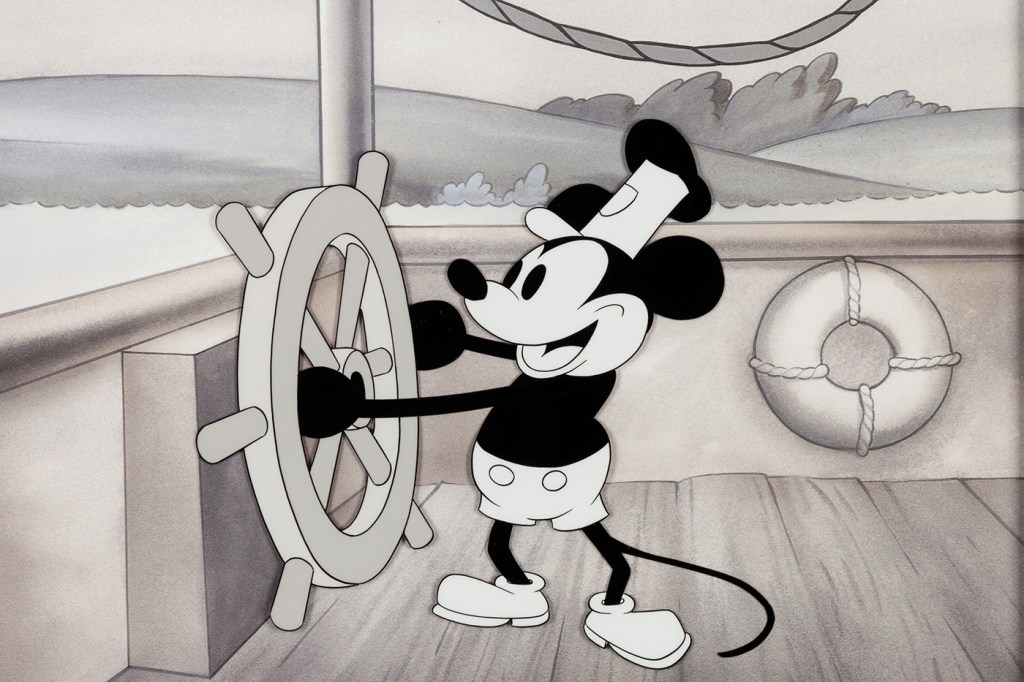Mickey Mouse raises question: What is the difference between copyright and trademark? It’s a ‘gray’ area, expert says

As the curtain opened on 2024, Mickey Mouse stepped to the front of the stage — officially entering the public domain with the expiration of copyright protection for his 1928 debut film “Steamboat Willie.”
Something that didn’t expire? Mickey Mouse as a trademark, which makes using Mickey Mouse not quite as simple as one might think, according to Alexandra Roberts, a Northeastern University law and media professor.
“There are types of uses of Mickey that are now very clearly allowed under copyright law now that “Steamboat Willie” is in the public domain,” Roberts says. “There are other types of uses that are going to be a little gray, both because the character of Mickey presents some novel challenges under copyright, and because of Disney’s extensive use of Mickey as a trademark.”

According to the U.S. Copyright Office, for works created after Jan. 1, 1978, copyright protection lasts for the life of the author plus an additional 70 years. For an anonymous work, pseudonymous work or a work made for hire, a copyright lasts 95 years from the year of its first publication or 120 years from the year of its creation, whichever expires first. As a work made for hire, “Steamboat Willie” falls into this category.
But what is the difference between a copyright and trademark and why is it important in the case of everyone’s favorite mouse?
Roberts explains that as a visual depiction, Disney has also turned Mickey into a brand. That means trademark protection must be considered, she says.
Trademark law differs from copyright law in major ways. Most notably, trademark rights do not expire.
“For as long as you continue to use something as a brand in commerce — like as long as you put ‘Starbucks’ on coffee beans and you sell them to people — you have trademark rights,” Roberts says.
Editor’s Picks
To protect its brand, Disney has many trademark registrations for an image of Mickey used in connection with games, toys, hotel services, theme parks and all kinds of things, Roberts says.
“They also have a registered trademark for the evolution of Mickey that shows a bunch of different Mickeys,” she says.
The copyright only applies to artistic uses and derivative works. For example, use in movies and cartoons, Roberts says.
“The trademark applies to all these things that you can buy in a store — using Mickey Mouse to show that something is associated with Disney,” she says.
A second distinction is that unlike copyright law, trademark rights depend on consumer perception.
“If somebody takes a kind of slightly different version of Mickey Mouse and they put it on lotion or bottled water or something, then Disney’s going to say ‘Oh, people are going to be confused into believing we sell that or authorized you to use it or that you licensed that mark from us, and so we’re going to stop you,’” Roberts says.
Moreover, you cannot tarnish a famous trademark in a way that harms the mark’s reputation, according to case law. Roberts notes that the Dallas Cowboys successfully sued the distributors and producers of the pornographic film “Debbie Does Dallas” because advertising and costumes associated the film’s lead with the team.
There are caveats, of course.
Roberts cites the Dastar ruling — where “the Supreme Court basically said, listen, you can’t use trademark law to make an end run around copyright law,” Roberts says.
And she described the Debbie Does Dallas case as “a little bit of an outlier.”
“I don’t know that we would see more cases like ‘Debbie Does Dallas,’” Roberts says. “But I also don’t think that users of Mickey Mouse can feel really safe and secure that they can do whatever they want with this character and that they won’t get sued, or they won’t get a cease-and-desist letter or that they won’t end up in court.”
Which gets to whom ultimately decides what can be done with Mickey Mouse… the courts.
“I keep being surprised to see people who are very confident on saying ‘this is how it is,’ it seems like there are a lot of ways that this could go,” Roberts says. “I think it’s confusing to lawyers too, right now.”











